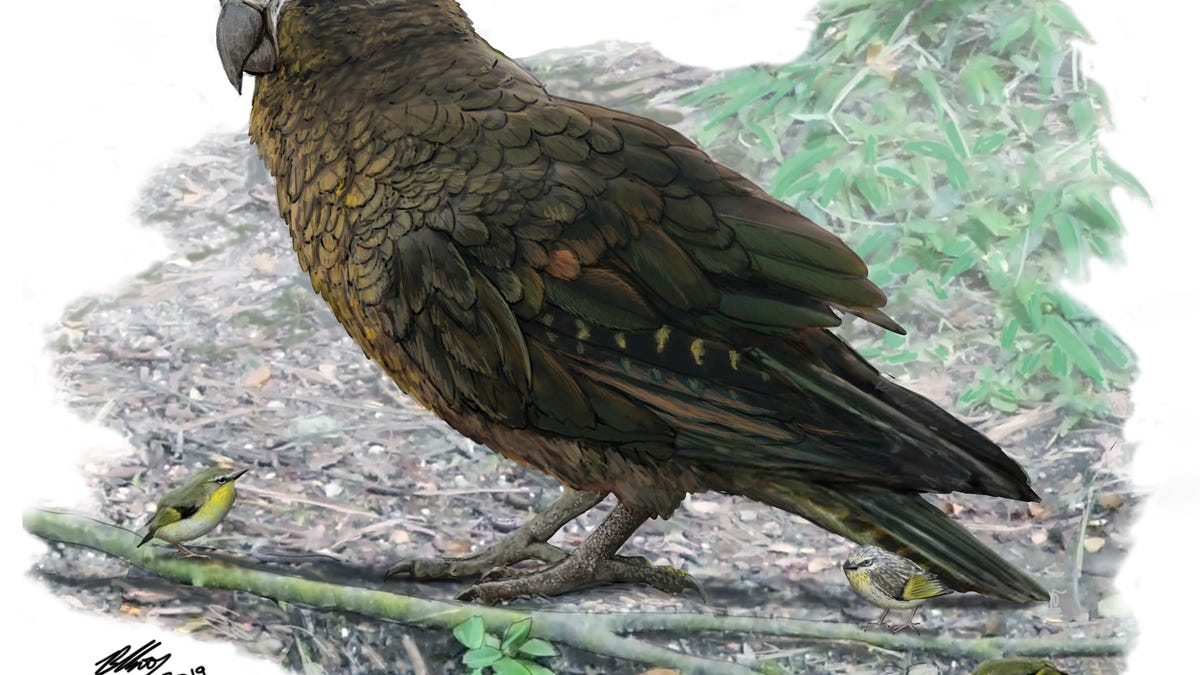Giant, dog-sized parrot was more cannibal than copycat
This big bird was more likely to crack a skull than perform party tricks mimicking your favorite curse words.
Introducing Heracles inexpectatus, a giant parrot that is the largest the world has ever known. Scientists say this prehistoric polly definitely wanted much more than just a cracker.
Australian paleontologists recently discovered the squawkzilla in 19 million-year-old fossils from New Zealand, where rich deposits of dead things have been turning up grand old birds for decades now.
"Not only moa dominated avifaunas, but giant geese and adzebills shared the forest floor, while a giant eagle ruled the skies," Flinders University Associate Professor Trevor Worthy, who has been helping to excavate the deposits for years, said in a release. "But until now, no-one has ever found an extinct giant parrot -- anywhere."
The research team involved published a paper outlining the discovery in the journal Biology Letters.
Researchers say Heracles stood up to a meter (3.3 feet) tall. That means if it were around now, it could look even the largest dogs on the planet, such as the Great Dane, in the eye. It also would be unlikely to settle for the seeds and other simple feed that most pet parrots put up with today.
"Heracles, as the largest parrot ever, no doubt with a massive parrot beak that could crack wide open anything it fancied, may well have dined on more than conventional parrot foods, perhaps even other parrots," said Professor Mike Archer, from the University of New South Wales.
Prehistoric times never fail to become more horrifying the more we learn. Add to the list of terrors giant cannibal parrots feeding on the forest floor while perhaps mimicking the monstrous roars of even more terrifying creatures. Now I think maybe I'll just stay inside forever.


